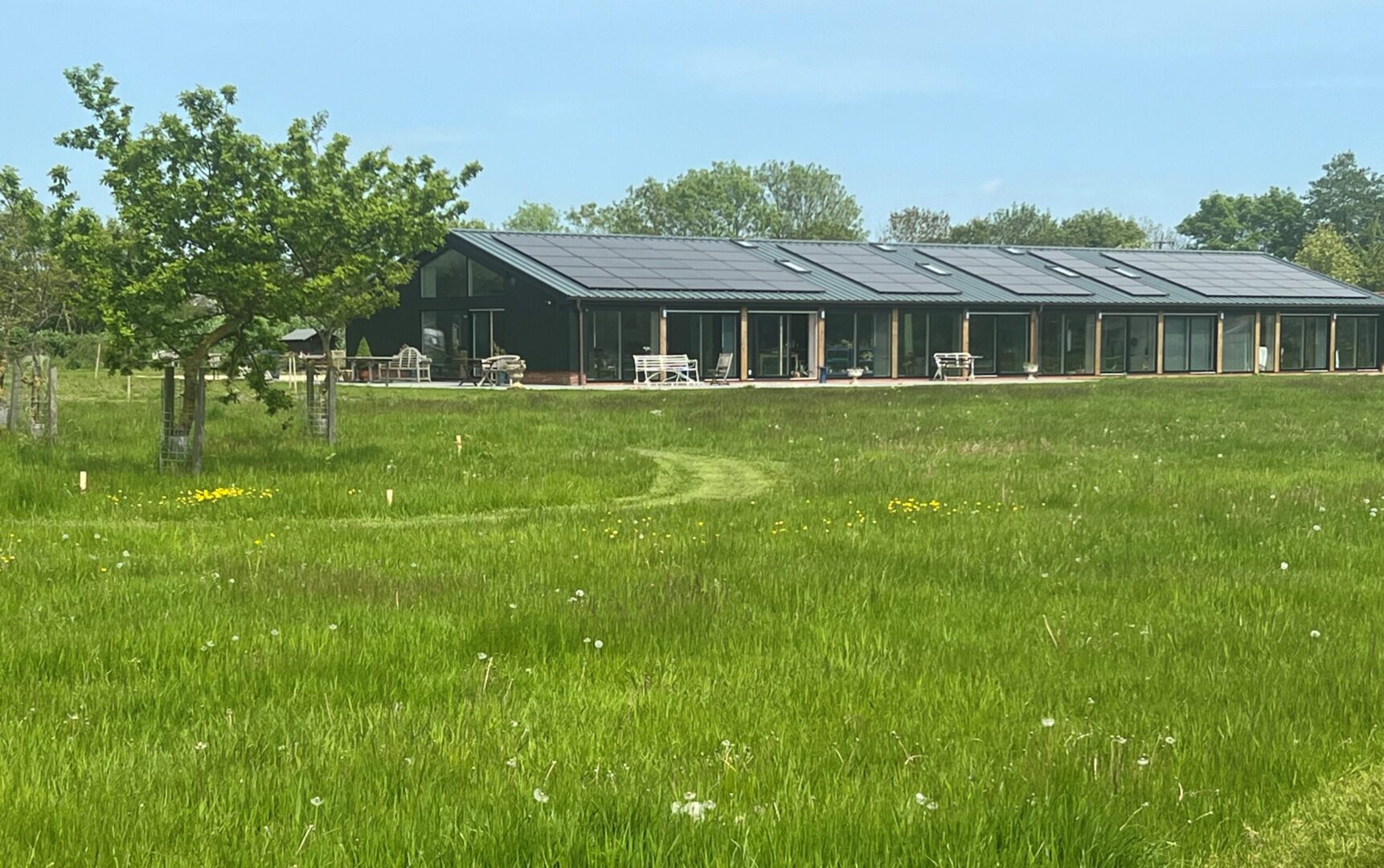Pilgrims Barn, Suffolk

In an energy and a cost-of-living crisis, Pilgrims Barn lies in the eye of the hurricane due to its extraordinary autonomous design. It is concrete evidence that rooftop solar, combined with battery storage and well-planned insulation, can deliver significant financial benefits for homeowners while also drastically reducing their carbon footprint.
Bridging the gap between affordability and sustainability in a dream home
Found on an old pilgrim trail between the North and the South of East Anglia, the converted barn is powered entirely by the sun with 75 solar panels on the roof and three Tesla Powerwall Batteries in the garage.
For Nick and Saffy Woolley, the homeowners and project managers, it is essential to approach sustainability in a holistic manner; focusing on not wasting energy is as important as producing it from clean, renewable sources. ‘Sustainability is originally founded on the concept of thinking globally and acting locally. And you can’t get much more local than starting with the way your home uses energy and gets its energy’, he says.
Since a lot of energy is lost when it’s transported, it makes a lot of sense to generate energy where you use it the most – at home. Pilgrims generates approximately 26 megawatts of electricity per year. All energy requirements, in an all-electric house with two electric cars, was 18 MWhs. This allowed for a net sale of almost eight megawatts to the grid over 12 months. In the winter months, Nick buys some energy back from the grid, mainly to energise the two cars.
Pilgrims boasts five bedrooms, a home office, a garage, and a home gym which are used regularly by visitors. The space requires a lot of electricity and hot water. However, this does not mean that it’s expensive to run.
It’s the cost-effective eco-construction, its super-eco services and smart systems that allow for adequate hot water provision and air temperatures to stay pleasant all year round. Its cleverly designed and super-insulated hot water tank uses a fraction of the energy a conventional hot water tank uses by heating water on demand and delivers piping hot water within seconds.
The house benefits from other systems like underfloor central heating, dense wall construction and a Mechanical Ventilation Heat Recovery System (MVHR) which hold heat in the building. By focusing on airtightness through insulation, heat loss is minimised and subsequently so is overall household energy consumption. In Nick’s case, this meant enjoying spring temperatures of up to 25C indoors during last year’s exceptionally cold winter without needing to turn the heating on.
‘A fully sustainable home’
For Nick and Saffy Woolley, this home is their quest to create a sustainable future for themselves. ‘It’s part of our pilgrimage to try and effectively help developers to understand that they can create some huge benefits for would-be owners at no greater cost by incorporating more solar and batteries’, Nick tells us.
‘Pilgrims is a way to prove to everyone that it’s possible to have a fully sustainable home which costs no more to build per square metre than an average home. But for that to happen, developers need to lead the way and change direction in their operations. There needs to be an industry-wide understanding that building carbon zero homes will generate savings of thousands of pounds; that it is the only way forward in the search for sustainability.’
As an investment with a very high return and a payback period of three to five years, Nick’s advice is for more homeowners to take control of their energy costs by exploring solar and batteries. Nevertheless, he recognises that many people will struggle with the upfront costs of installing solar panels. To address this, he calls for government action in the form of grants or genuinely repayable loans to ensure that many more people across the country can reap the benefits of homes like Pilgrims.
Nick adds, ‘I think it’s not a case of can we afford to do it, is it? It’s more a case of can we afford not to do it?’.



